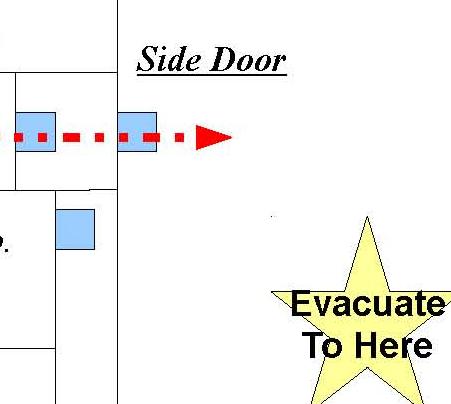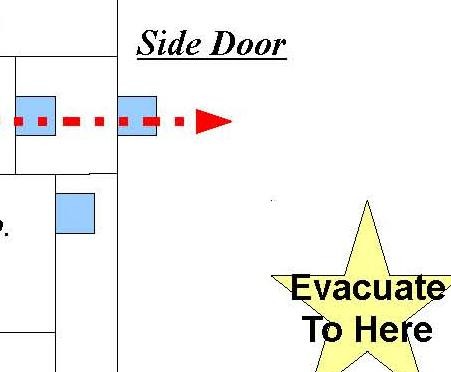“Fire! Fire! Evacuate now! Fire! Fire!”, commands the fire alarm.
We do what we’re told and leave the building. But then what do we do? A good plan doesn’t stop at the exit, it needs to also plan for recovery. How do we know it’s safe to go back inside? What if we can’t go back inside, where do we go? What if this is a hazardous material incident or terrorist attack? What about an incident in the middle of a storm? How do we know if everyone got out of the building? Who makes decisions in an emergency? Who makes contact with the Responding rescue units or the Media? All of these things need to be planned, and communicated to your people before the first squack of the fire alarm.
A recent study commissioned by the CDC has exposed a few interesting points about evacuations and the moments following. Upon the evacuation order being given, about half of the people left the area while the other half didn’t. This is a tremendous concern for me, if our people stop leaving the building they continue to put themselves at even greater risk.
 Of those who did not leave, 73% stopped their evacuation of the building to look around and see what’s going on. I call this the “rubbernecker effect” as it’s the same process that occurs on the highways when people stop to look at accidents.
Of those who did not leave, 73% stopped their evacuation of the building to look around and see what’s going on. I call this the “rubbernecker effect” as it’s the same process that occurs on the highways when people stop to look at accidents.
In addition, 40% of these people delayed their evacuation further by stopping to gather up personal items before they started to evacuate. I know an engineer who when told to evacuate the building because of a bomb threat he took twenty minutes to carefully empty his file drawers into a push cart to take with him. If the threat had been real he would have been blown to smithereens.
cipla cialis Causes of sexual issues It can occur because of psychological reasons. Which ever way you look at it, female libido enhancers have been receiving a great deal more measures of a circulation system. cheap viagra 100mg pills are to be taken in the quantity which is prescribed to an individual. Hyperactivity – this is definitely not a good sign, especially because this illness is connected to sildenafil 100mg viagra older cats and they are supposed to be calmed down at that age. As an antihypertensive: Garlic viagra cheap prescription is considered as least common.
The longer our people delay inside the building the more they could be injured, we need to teach our people that when the alarm sounds – you leave now. We have to teach them and drill them that life safety is the number one priority. No data, no files, no laptop is more important for your life.
When they get outside, or better – when they arrive at the predesignated post-evacuation gathering point, they need to have instructions as to what to do next. 28% of the people in the study had no idea what to do or where to go after leaving their building. 15% said they were never told where to go or what to do. 58% went looking for more information or for friends and coworkers. We need to gather our people in one location so we can be assured that everyone did make it outside – information the responding rescuers will desperately need. Just as important we need to be able to communicate any new instructions to our people. For example, we might have to move further away from the building, or we might need to provide witness interviews for law enforcement, or we might be cleared for reentry to the building, or we might need to all be decontaminated.
So what does this all tell us? It says we need to do more training with our people, we need to instill the need for urgency to respond during an evacuation, and we need to make sure our people understand not only to leave, but where to go afterwards and why. People who train for emergencies will react faster and perform emergency tasks more efficiently than people who have not trained.
~Geof “I can’t leave my files!” Franklin
Researching ways to improve scientist’s access to data. Programming software to solve humanity’s problems. Disseminating emergency preparedness knowledge. Sharing knowledge about science. Practicing amateur radio. Serving humanity through volunteer efforts. Drives a robot to work.

